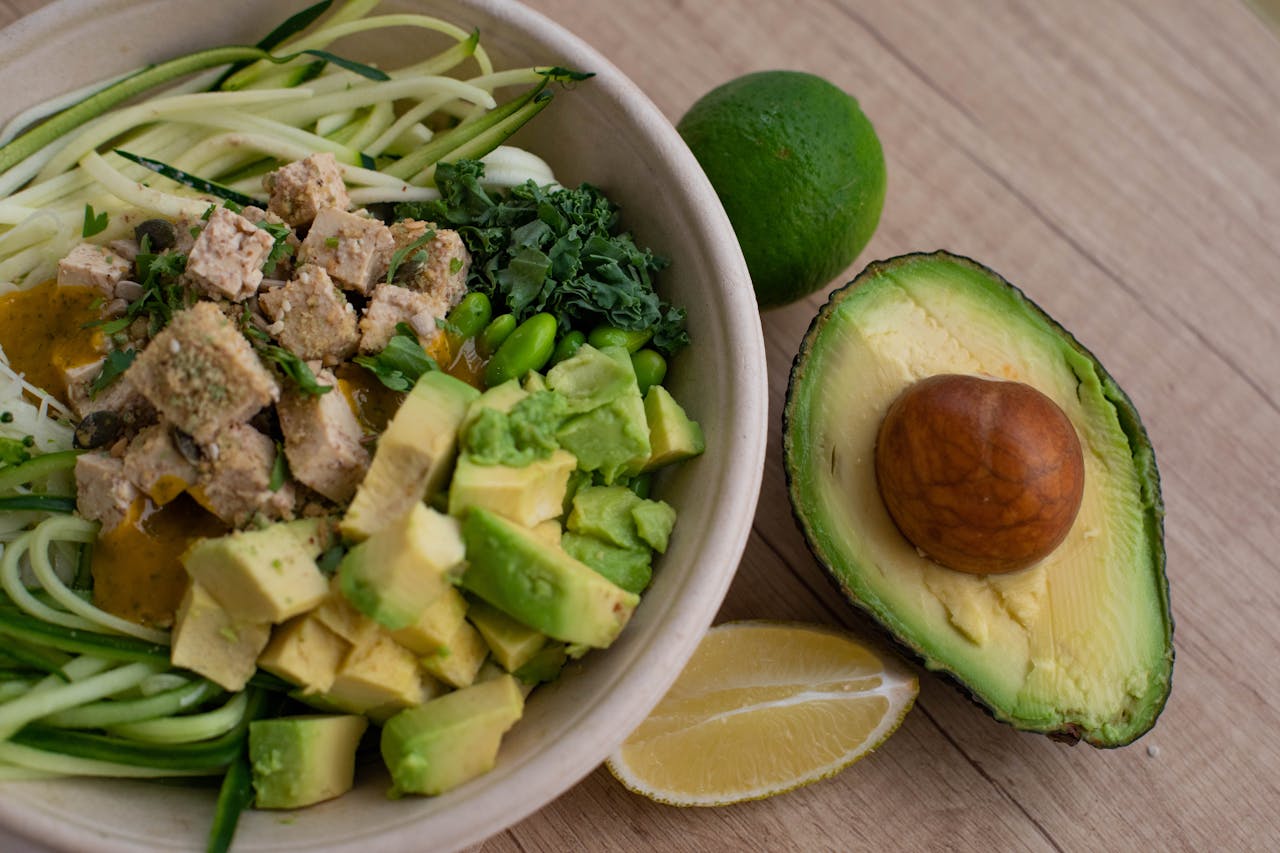Keto-friendly workouts: Combining fitness and low-carb living
Keto-friendly workouts are a great way to maintain fitness levels without going overboard on carbs.
Can you maintain peak performance while following a low-carb diet? Most fitness lovers worry that carbohydrates are critical to diets since they provide energy to work out. However, ketogenic diets are effective in fat shredding, muscle saving, and even stamina building.
When paired with keto-friendly workouts, keto can help you achieve your fitness goals while enhancing performance. Being able to nourish your body and consequently modify your exercise program to fit the state of ketosis is essential.
Let's discover how these keto workouts help an individual's strength, endurance, and general well-being.

Source: Pexels
Understanding the keto diet and exercise
A ketogenic diet is a low-carb diet and offers a high-fat intake. The purpose is to get the body to switch its metabolism from carbs or sugar to fat as its fuel source.
This state is called ketosis, where the body can access fat reserves systematically, which is ideal for weight loss and controlling energy levels. But, just like all the other forms of dieting, this process has some limitations.
Traditional workouts depend on carbohydrates or glycogen. Now, you have keto, and with that comes a set of specific modifications that need to be made to your exercise program to accommodate your body's new fuel source.
As your body adjusts to burning fat for fuel, you may feel fatigued during the transition to keto. Though this phase can alter performance, it is short-lived and generally called the 'keto flu.'
You can get over this phase by consuming more fat, staying hydrated, and having enough electrolytes. With time, your body adapts to burning fat, enhancing energy levels, endurance, and overall workout performance.

Source: Pexels
Best keto-friendly workouts
1. Strength training
Whether lifting weights or doing body-weight exercises, strength training is best suited for the keto diet as fat, not glycogen, gets metabolized. Training with exercise bands also helps maintain muscle mass while shedding fat.
You can improve your performance with correctly timed rest, lifting heavier weights, or increasing the repetitions you do.
Bodybuilding exercises like deadlifts, squats, and bench presses should comprise most of your routine. Since these exercises target multiple muscles, they are the most effective for burning calories and building muscles.
Recovery days are equally important, so ensure you have enough protein to build your muscles.
2. High-Intensity Interval Training (HIIT)
HIIT means you focus on a high-intensity workout for 30 seconds to 5 minutes and use the rest period to get re-energized. HIIT is successful in improving fat loss and metabolic conditioning.
Because keto relies on fat for fuel, these two elements can work together to improve endurance while maximizing caloric burn without a heavy dependence on carbs.
To maximize HIIT while in ketosis, opt for sprinting, kettlebell swings, jumping squats, and burpees. Begin with easy 10 to 15-minute sessions and gradually increase the duration and intensity as your fitness improves. You can also complement your routine with a WallPilates 10-minute session to improve core strength and flexibility while giving your muscles a low-impact recovery workout.
Follow with a proper warm-up routine to reduce the risk of sustaining injuries and increase the duration of rest between sets.
3. Steady-state cardio
Like other low-intensity steady-state cardio activities, brisk walking, cycling, and swimming blend well with the keto diet. These activities emphasize fat utilization for energy and do not require a high carb intake.
LISS assists with fat burning over longer durations and is also suitable for cardiovascular health. To get the most benefits, one has to do steady-state cardio for 30-60 minutes two to three times a week.
Doing morning cardio in a fasted state might aid in sharper fat burning since it burns energy from fat reserves. Adding more outdoor activities, such as hiking and jogging, makes working out fun.
4. Yoga and flexibility workouts
Yoga and stretching exercises improve flexibility, stress relief, and overall health. This workout requires low to moderate energy and can easily be matched to a keto diet since it has stable energy levels. Yoga practice can aid in recovery and reduce muscle soreness.
You can choose between Hatha and Vinyasa yoga styles with different intensity levels. Foam rolling and dynamic stretches pre-workout can also increase the range of motion to help stave off injury. Breath work helps aid relaxation and improves focus and clarity, which is excellent for general health.

Source: Pexels
How to optimize your workouts on keto
1. Prioritize electrolyte balance
Too little insulin on a keto diet can result in electrolyte deficiency, which can, in extreme cases, cause tiredness and muscle cramps. Eating enough sodium, potassium, and magnesium from avocados, green leafy vegetables, nuts, and mineral supplements can prevent this.
2. Eat enough healthy fats
Fats should be a primary energy source from nutrient-dense sources such as deep-fried olive oil, coconut oil, nuts, seeds, and fatty fish. This will ensure adequate energy and ideal performance.
3. Time your meals around workouts
In terms of fitness, it is essential to time your meals properly. For example, a protein and fat-rich meal before workouts can fuel the body with much-needed energy. For intense training, consider keto-targeting during the exercise; this means a small pre- and post-workout snack.
Protein should be consumed after the workout to facilitate muscle recovery. Post-exercise, carbs should be consumed in moderation, and protein should be prioritized.
4. Stay hydrated
Proper hydration is pivotal to performance levels, especially when switching to the keto diet. Water should be sipped throughout the day to aid muscle function and remain active.
Recovery and performance enhancement on keto
To perform at the highest level, recovery is one of the significant aspects to focus on if consistency is desired in the workout regime. Strategies like getting better sleep, reducing stress, and engaging in active recovery (stretching or foam rolling) help with muscle recovery. On keto, performance and recovery can be further enhanced by supplements like BCAAs, MCT oil, and creatine.
High-quality sleep is also crucial for keeping the body in muscle recovery mode; aim for 7-9 hours each night. Enhancing recovery can be done by partaking in meditative activities or walking. Contrast therapy and cold showers can minimize muscle soreness and inflammation.
Conclusion
Keto-friendly workouts are a great way to maintain fitness levels without going overboard on carbs. Managing to fuel your body correctly, exercising, and rest are all essential steps towards reaching your fitness goals without depending on carbs. Be it fat loss, muscle gain, or even endurance, the keto diet gives you the energy required to perform high-intensity workouts. It is possible to attain optimal performance and health benefits with years of adopting a low-carb lifestyle. Coir mats can be an excellent option for a home gym due to their durability and comfort.
